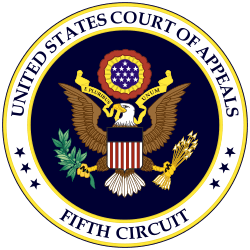Dixon v. Alabama facts for kids
Quick facts for kids Dixon v. Alabama |
|
|---|---|
 |
|
| Court | United States Court of Appeals for the Fifth Circuit |
| Full case name | St. John Dixon, et al. v. Alabama State Board of Education, et al. |
| Decided | August 4 1961 |
| Citation(s) | 294 F.2d 150 |
| Case history | |
| Prior history | Dixon v. Alabama, 186 F. Supp. 945 (M.D. Ala. 1960) |
| Holding | |
| That students at public institutions of higher education cannot be disciplined without due process, including notice of their alleged violations and an opportunity to be heard. | |
| Court membership | |
| Judge(s) sitting | Benjamin Franklin Cameron, Richard Rives, John Minor Wisdom |
| Case opinions | |
| Majority | Rives, joined by Wisdom |
| Dissent | Cameron |
| Laws applied | |
| 14th Amendment to the United States Constitution | |
Dixon v. Alabama was a very important U.S. court case in 1961. It changed how public colleges and universities could treat their students. Before this case, colleges often acted in loco parentis, which means "in the place of a parent." This allowed them to discipline or expel students without much explanation.
This landmark decision made it clear that public colleges must give students "due process" before punishing them. Due process means fair treatment. It includes telling students what they are accused of and giving them a chance to tell their side of the story. This case is often called the most important one about students' rights in public higher education.
Contents
Why This Case Was Important
The Dixon v. Alabama case was a big step for student rights. It ended the old idea that colleges could act just like parents. This meant students at public colleges gained more protection under the law. They could no longer be kicked out without a fair hearing.
The Story Behind the Case
The case started at Alabama State College. At that time, it was a college mainly for Black students. Six students, including St. John Dixon, were expelled from the college. The college did not give them a clear reason for their expulsion. However, it was believed they were expelled because they took part in peaceful protests. These protests were part of the Civil Rights Movement.
The college expelled these students without giving them a hearing. This meant the students didn't get to explain their actions. They also weren't told exactly what rules they had supposedly broken.
The Court's Decision
The students appealed their case to the Fifth Circuit Court of Appeals. This court decided that public colleges could not expel students without at least some basic due process. This means colleges must:
- Tell students what they are accused of doing wrong.
- Give students a chance to explain themselves.
The court's decision was a major victory for student rights. It made sure that students at public colleges had a right to fair treatment.
Who Was Involved?
The case was heard by a group of judges. They were John Minor Wisdom, Richard Rives, and Benjamin Franklin Cameron. Judge Cameron disagreed with the final decision.
Many important lawyers helped the students in this case. These included Thurgood Marshall, who later became a Supreme Court Justice. Other lawyers were Fred Gray, Derrick Bell, and Jack Greenberg.
See also
- Tompkins v. Alabama State University

